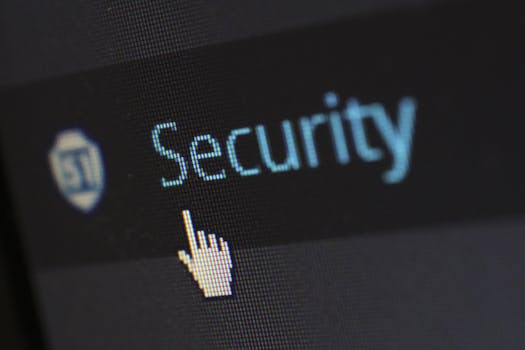Cybersecurity Trends for 2025: What You Need to Know
The digital landscape is evolving at breakneck speed, and with it, the cybersecurity threats we face. Staying ahead of these emerging trends is crucial for individuals and organizations alike. This article explores the key cybersecurity trends expected to dominate in 2025 and beyond, providing insights and actionable steps to prepare for the challenges ahead.
The Rise of AI-Powered Attacks and Defenses
Artificial intelligence (AI) is a double-edged sword. While it offers powerful tools for bolstering cybersecurity, it’s also empowering cybercriminals to develop more sophisticated and automated attacks.
- AI-driven phishing and social engineering: Expect to see highly personalized phishing campaigns leveraging AI to craft convincing lures and exploit individual vulnerabilities. AI can analyze social media profiles, online behavior, and public data to create tailored attacks that bypass traditional security filters.
- Automated penetration testing and vulnerability scanning: Hackers will increasingly use AI to automate the process of finding and exploiting system weaknesses. This will require organizations to adopt AI-driven defense mechanisms to identify and patch vulnerabilities proactively.
- Deepfake technology for fraud and manipulation: Deepfakes, AI-generated synthetic media, pose a significant threat. They can be used to impersonate individuals, manipulate public opinion, and facilitate sophisticated fraud schemes. For example, a deepfake video of a CEO could be used to authorize fraudulent transactions or spread misinformation.
- AI-powered threat detection and response: On the defensive side, AI can analyze massive datasets of network traffic and security logs to identify anomalies and predict potential threats. This allows security teams to respond to incidents faster and more effectively.
The Expanding Attack Surface of the Internet of Things (IoT)
As more devices become connected to the internet, the attack surface expands exponentially. IoT devices, often lacking robust security features, become easy targets for cybercriminals.
- Smart home vulnerabilities: Connected appliances, security systems, and even smart toys can be exploited to gain access to home networks and personal data. Botnets composed of compromised IoT devices can launch large-scale DDoS attacks.
- Industrial IoT (IIoT) risks: Attacks targeting critical infrastructure like power grids, water treatment plants, and manufacturing facilities can have devastating real-world consequences. Securing IIoT devices is paramount to prevent disruptions and ensure public safety.
- Medical device security: Connected medical devices, such as pacemakers and insulin pumps, are vulnerable to hacking. Attacks on these devices can have life-threatening consequences, highlighting the need for robust security protocols in healthcare.
The Metaverse and Web3 Security Challenges
The metaverse and Web3 present exciting new opportunities but also introduce unique security risks.
- Identity theft and fraud in virtual worlds: Protecting digital identities and assets in the metaverse will be a major challenge. Cybercriminals can exploit vulnerabilities to steal virtual currency, digital art, or even impersonate users within virtual environments.
- Data privacy and security in decentralized platforms: Web3 applications rely on blockchain technology, which offers transparency and immutability. However, securing smart contracts and decentralized autonomous organizations (DAOs) from vulnerabilities is crucial to prevent exploits and financial losses. The 2022 Ronin Network hack, resulting in the theft of over $600 million, highlights the risks associated with decentralized platforms.
- The evolving landscape of NFT security: Non-fungible tokens (NFTs) are becoming increasingly popular, but they are also susceptible to theft and fraud. Protecting NFT ownership and preventing counterfeiting will require robust security measures and authentication protocols.
The Human Element: Social Engineering and Insider Threats
Despite technological advancements, human error remains a significant security vulnerability.
- Advanced social engineering tactics: Cybercriminals are becoming increasingly sophisticated in their social engineering techniques, using psychological manipulation and personalized lures to trick individuals into divulging sensitive information or clicking malicious links.
- Insider threats: Malicious or negligent insiders can pose a serious threat to organizations. Employee training and robust access control measures are crucial to mitigate insider risks. The Edward Snowden case is a prime example of the damage an insider can inflict.
- The growing need for cybersecurity awareness training: Educating employees and users about cybersecurity best practices is essential. Regular training programs should cover topics such as phishing awareness, password security, and social media safety.
Quantum Computing and the Future of Cryptography
The advent of quantum computing poses a significant threat to current cryptographic algorithms.
- Breaking existing encryption: Quantum computers have the potential to break widely used encryption methods, rendering sensitive data vulnerable. Organizations need to prepare for a post-quantum cryptography world.
- Developing quantum-resistant algorithms: Researchers are actively developing new cryptographic algorithms that are resistant to attacks from quantum computers. Transitioning to these new algorithms will be a major undertaking.
Preparing for the Future of Cybersecurity
Staying ahead of these evolving threats requires a proactive and multi-layered approach.
- Zero trust security: Adopting a zero trust architecture, which assumes no user or device is inherently trustworthy, can significantly enhance security. Every access request is verified, regardless of the user’s location or device.
- Threat intelligence and proactive threat hunting: Leveraging threat intelligence feeds and proactively hunting for threats within networks can help identify and mitigate risks before they escalate into full-blown attacks.
- Investing in cybersecurity talent and training: The cybersecurity skills gap is widening. Organizations need to invest in training and development to build a skilled cybersecurity workforce.
- Collaboration and information sharing: Sharing threat intelligence and best practices across industries is crucial to collectively combat cyber threats.
Summary
The cybersecurity landscape of 2025 and beyond will be characterized by sophisticated AI-powered attacks, an expanding attack surface due to the IoT, and new challenges presented by the metaverse and Web3. Addressing these threats requires a proactive and multi-faceted approach, encompassing advanced technologies, robust security protocols, and a strong focus on cybersecurity awareness and training. By staying informed and adapting to these evolving trends, individuals and organizations can better protect themselves from the ever-increasing risks in the digital world.




Leave a Reply